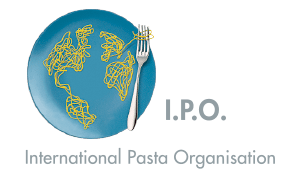Pasta continues to be one of the world’s favorite foods. Its increasing popularity in cultures around the globe can be attributed not only to its delicious versatility but also to its contributions as a nutritious complex carbohydrate that, when combined with vegetables and legumes and other healthy pairings, is one of the easiest and healthiest of mealtime choices.
Scientific Consensus on Pasta’s Health Benefits
In October 2015, 20 scientists from nine countries gathered to update the Scientific Consensus Statement on the Healthy Pasta Meal. Organized by the non-profit Oldways, the International Pasta Organisation (IPO) and AIDEPI, the scientific conference in Milan produced a collaborative statement that reinforced the many healthy aspects of pasta and addressed topics including gluten-free fads, sports nutrition and sustainability.
Since then, top Russian, Turkish and Brazilian scientists have added their names at subsequent World Pasta Day events in Moscow (2016) and São Paulo (2017). This year’s global event in Dubai will bring together more scientists and nutrition experts to review the latest research on the Mediterranean Diet, carbohydrates, and pasta, and who will add their signatures to the Scientific Consensus Statement on the Healthy Pasta Meal.
New study: Pasta & Weight Management
Ongoing studies on the health benefits of pasta in conjunction with many international universities continue to assess the impact of pasta consumption on weight, glycemic response and risk factors for diabetes and cardiovascular diseases.
University of Toronto Scientists John Sievenpiper, MD, PhD, FRCPC, Associate Professor, Department of Nutritional Sciences, and Cyril Kendall, PhD, Senior Research Associate, Department of Nutritional Sciences, Faculty of Medicine, will present the findings of their new study, published in the British Medical Journal (BMJ), at this year’s World Pasta Day gathering in Dubai.
“Carbohydrates are increasingly coming under attack for playing a role in the epidemics of obesity and the chronic diseases that result from obesity. Not all carbohydrates, however, behave the same way. There is an increasing recognition that carbohydrate quality is more important than carbohydrate quantity in the prevention and management of obesity and major chronic diseases,” said Dr. Sievenpiper.
He continued, “This is reflected in the shift in international public health policy and clinical practice guidelines away from a focus on single nutrients to a focus on foods and dietary patterns. Our study found that pasta, a low glycemic index carbohydrate food, does not contribute to increases in body weight or body fat and even contributes to modest weight loss when consumed as part of a healthy low-glycemic index diet.”
Dr. Kendall will discuss how the new findings will help shape dietary guidelines that are less concerned with the proportion of macronutrients and are increasingly focusing on nutrient quality and dietary patterns.
“Pasta is a healthy carbohydrate food and a key component of many of the world’s traditional healthy eating patterns, such as the scientifically-proven Mediterranean Diet,” said Dr. Kendall. “Recently completed systematic reviews and meta-analyses of clinical studies indicate that high carbohydrate diets that are low in glycemic index (GI), high in fiber, or emphasize healthy carbohydrate foods (whole grains, pulses, fruit) decrease cardiometabolic risk factors and are associated with decreased weight gain, diabetes and cardiovascular disease incidence in epidemiological studies.”
The Healthy Pasta Plate
- Made from durum wheat semolina or from the flour of other grains mixed with water and/or eggs pasta is simple and nutritious on its own.
- Because of the way pasta is made, its glycemic index is lower than many other carbohydrate foods like white bread and white rice. This means it has a better impact on blood sugar.
- Pasta is digested slowly, providing steady energy and a prolonged feeling of fullness, which can lead to less consumption of food at the next meal.
- An ideal portion is one-half to two-thirds of a cup of cooked (80 grams uncooked) pasta.
- When the plate is filled out with fiber-filled vegetables, heart-healthy olive oil and lean sources of protein like fish or beans, healthy pasta meals are linked with higher fiber intake and better diet quality.
- When trying to lose weight, take a balanced approach. Diets successful in promoting weight loss can emphasize a range of healthy carbohydrates, protein, and fat.
Dubai Municipal Program on School Nutrition
Home to the 2018 World Pasta Day international gathering, Dubai is actively educating school-age students with its “Food & Nutrition in Schools in Dubai” initiative by the Dubai Municipality. The program, held at the International Centre for Culinary Arts Dubai, is designed to curb obesity and help build a healthier generation. {Studies show that more than 34 percent of the school-going children in the United Arab Emirates are either obese or overweight.) “The Guidelines and Requirements for Food & Nutrition in Schools in Dubai” was designed to ensure children have access to nutritious, safe and wholesome food during their school time. Pasta is among the recommended foods.
For more information on health studies, please visit Pasta For All or watch these TED-Ed Lessons.


